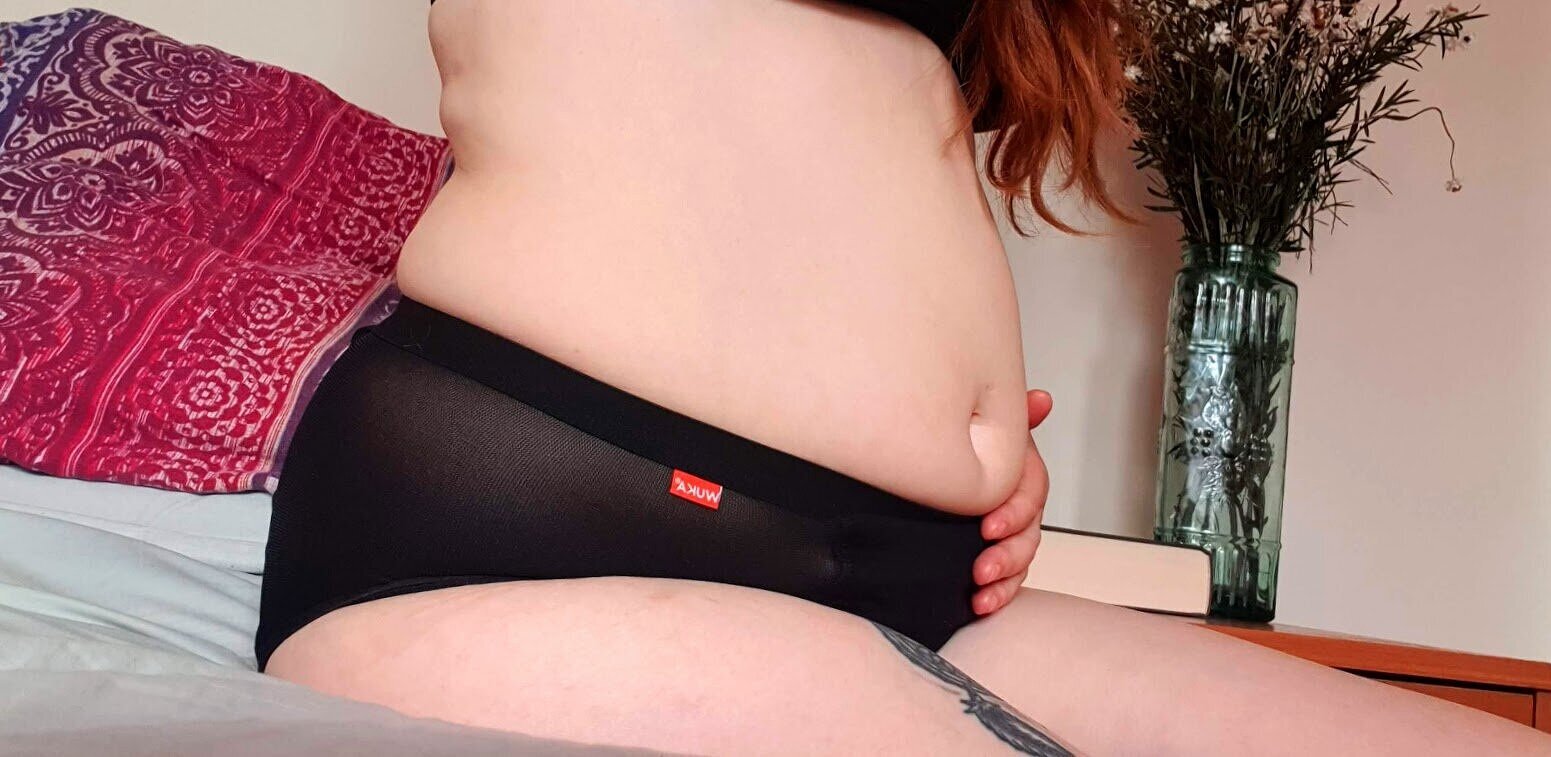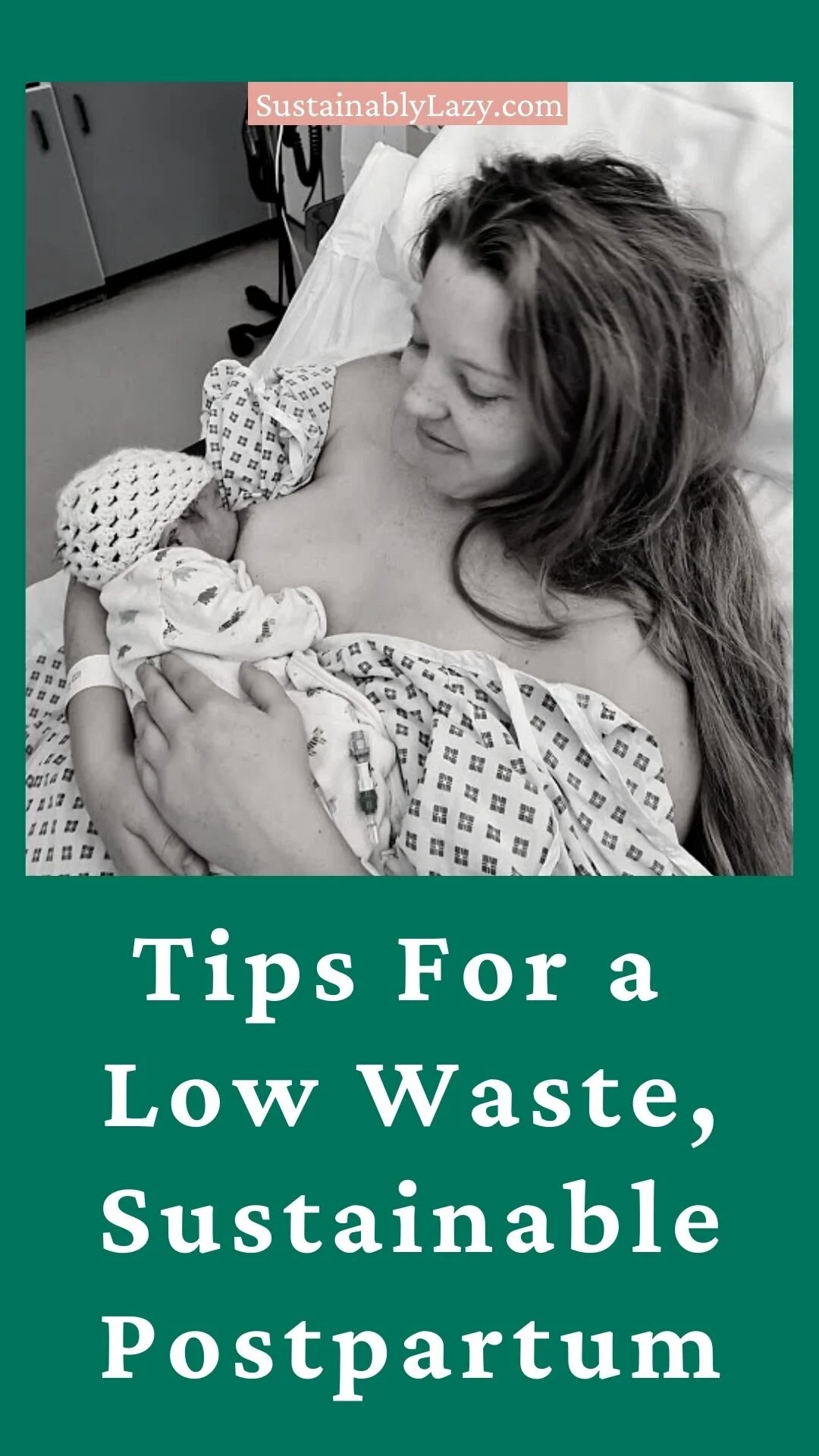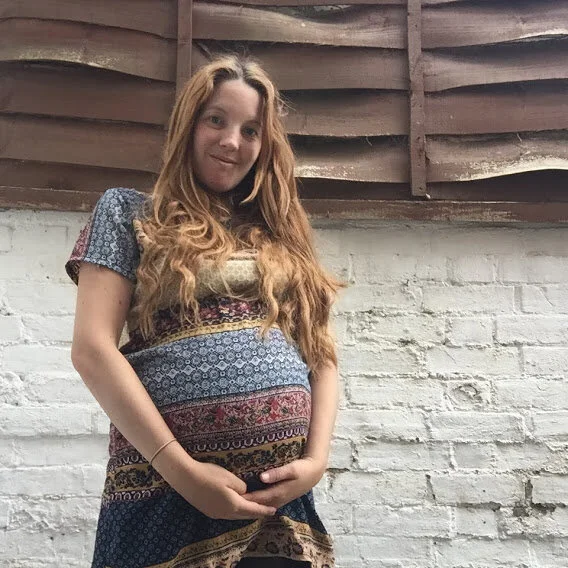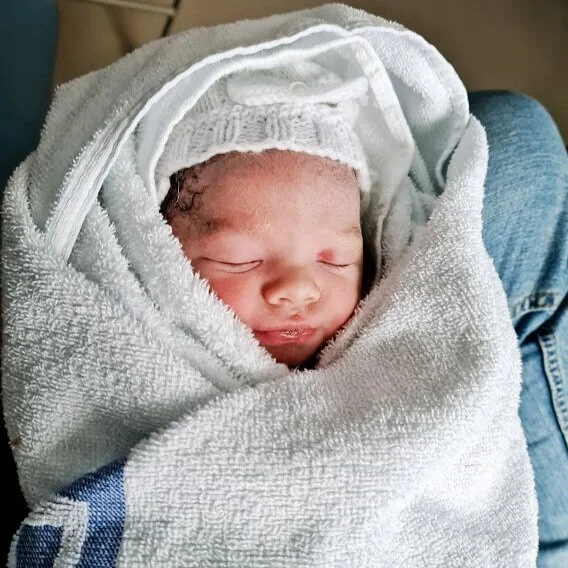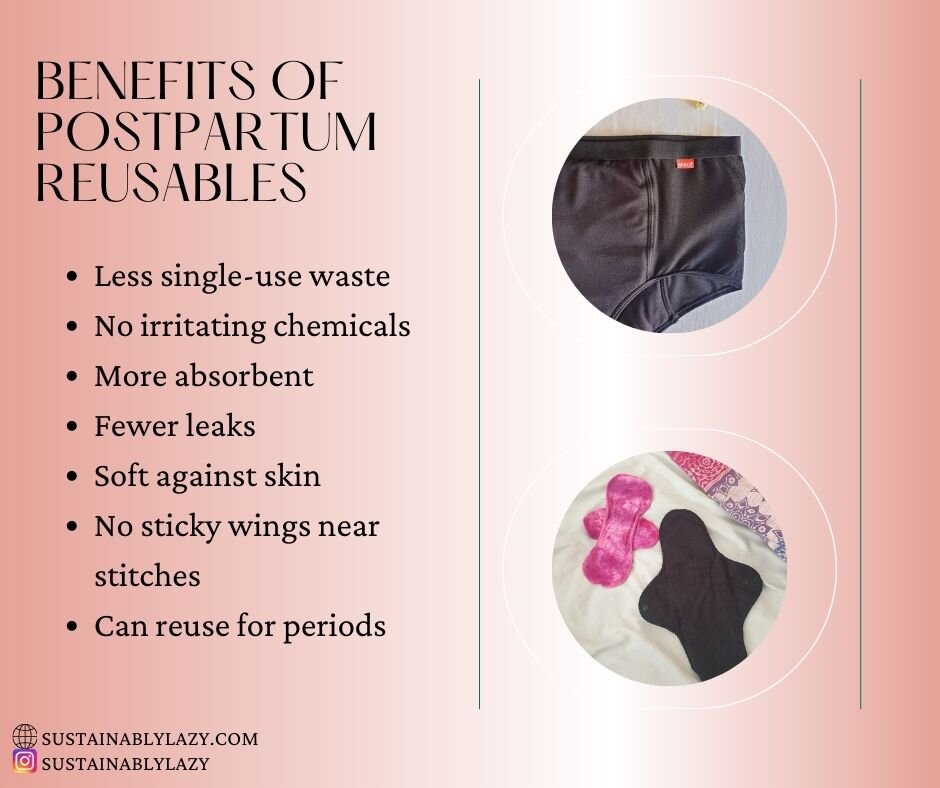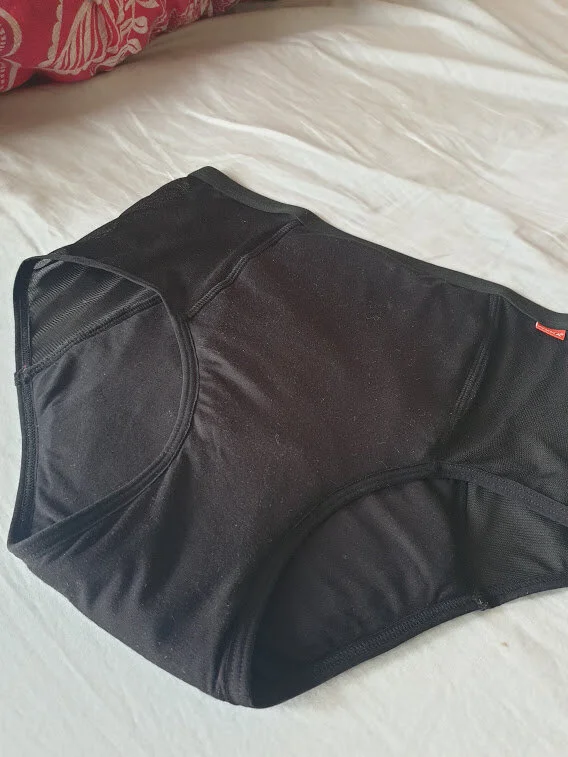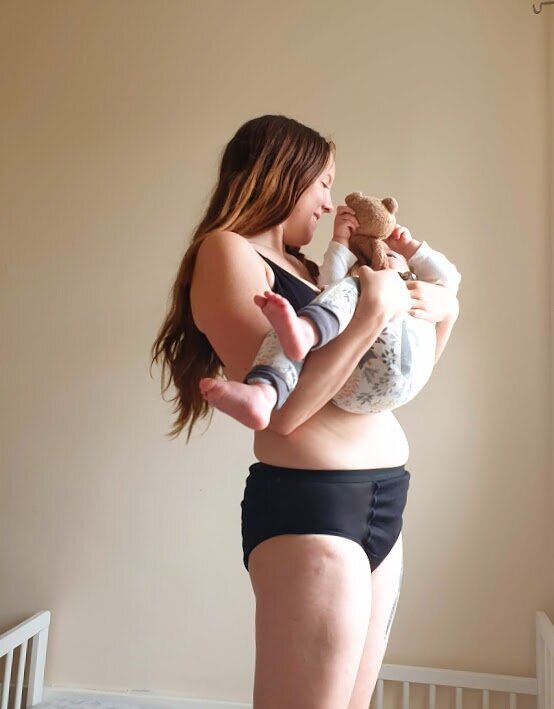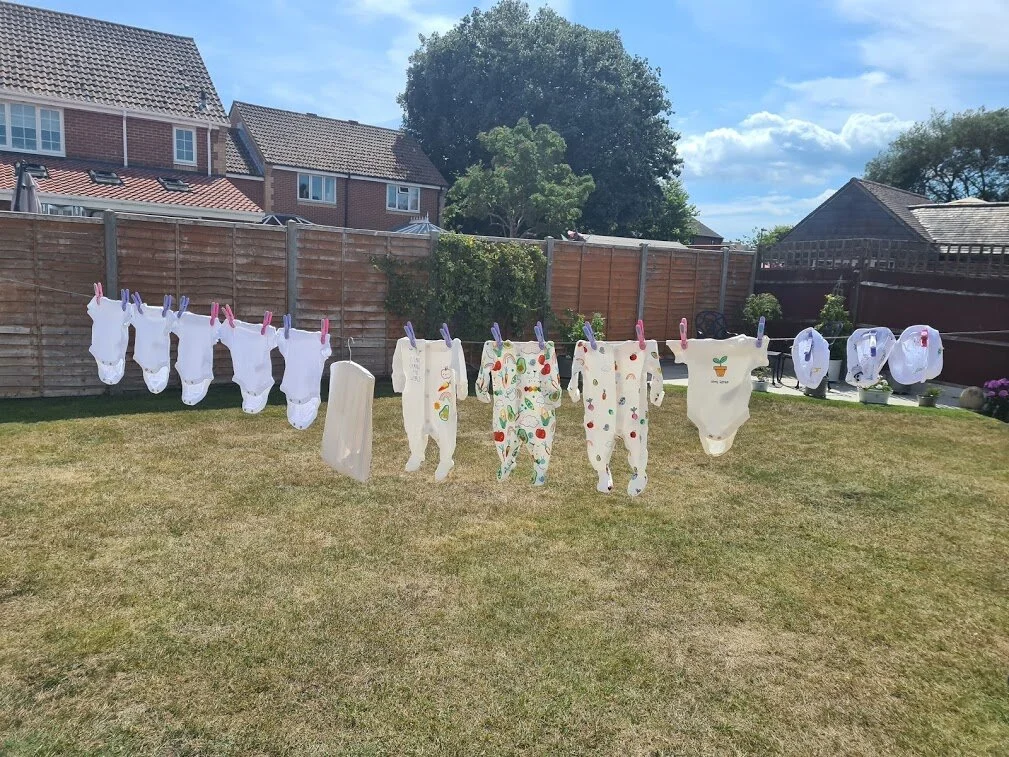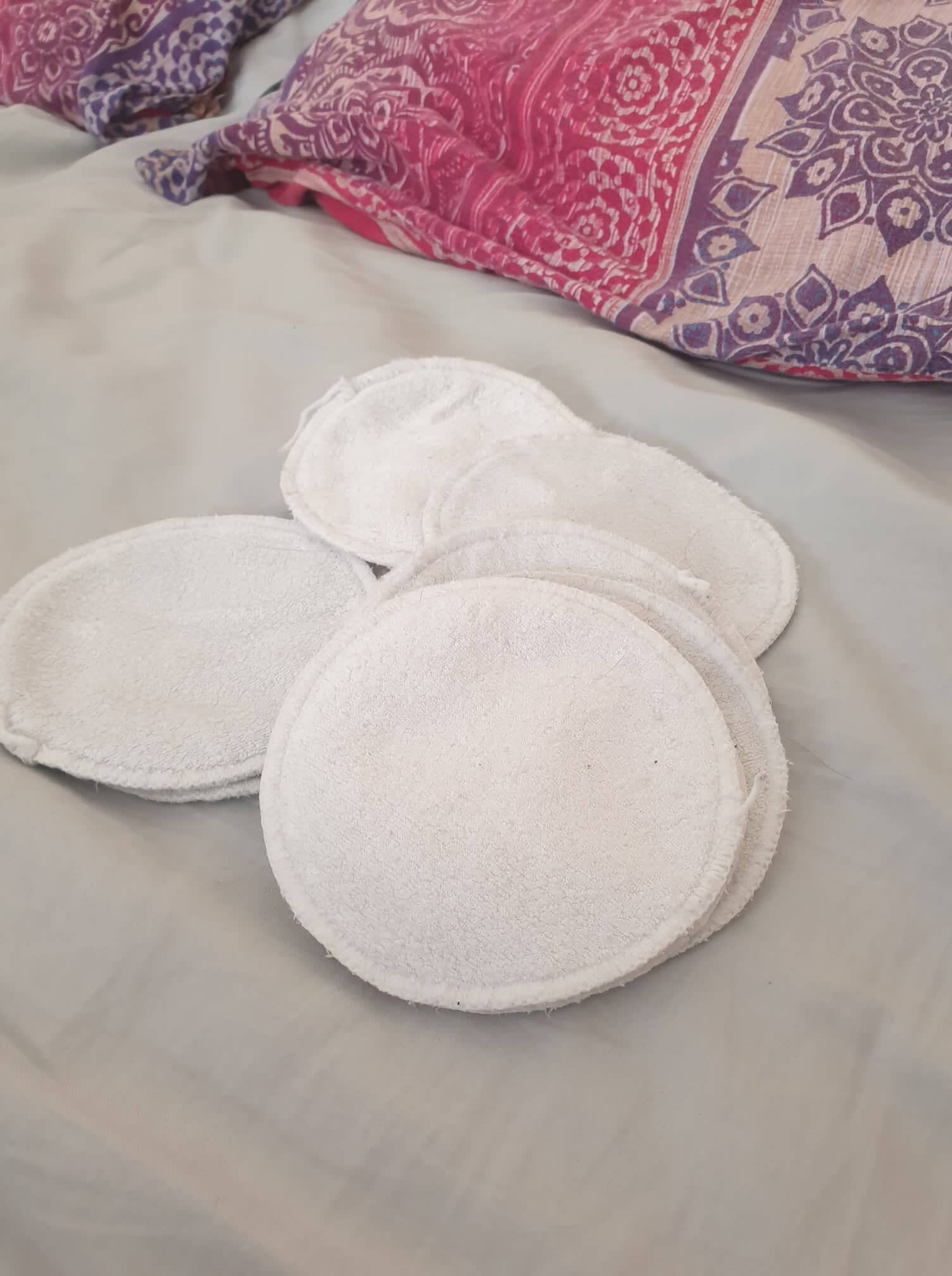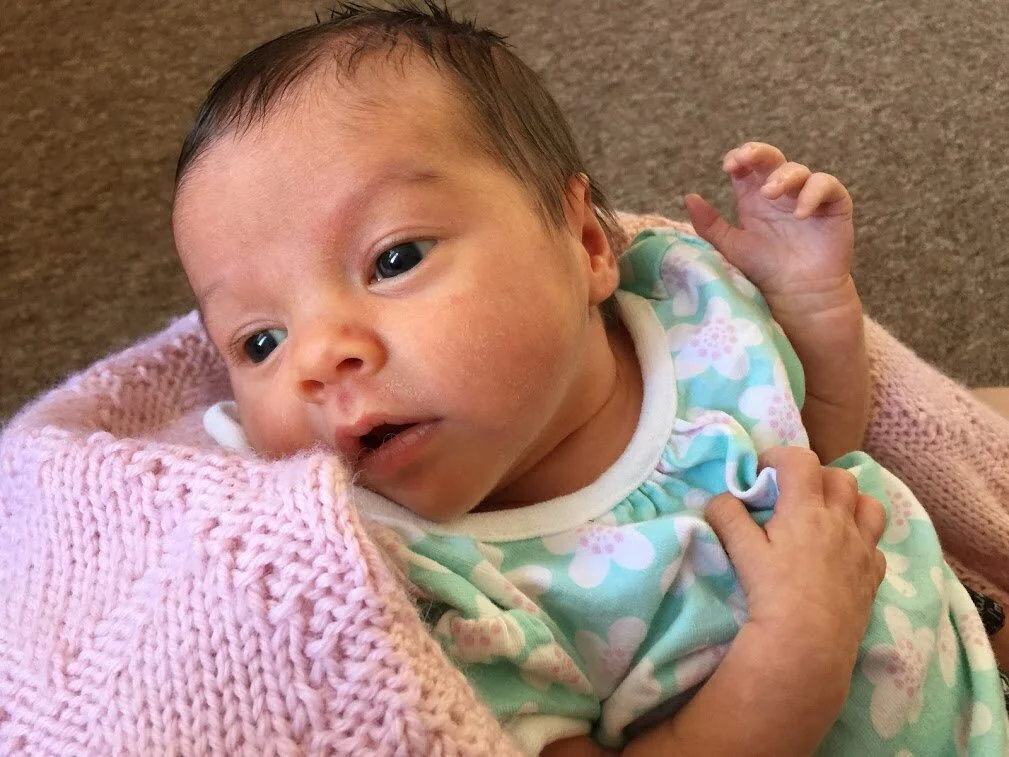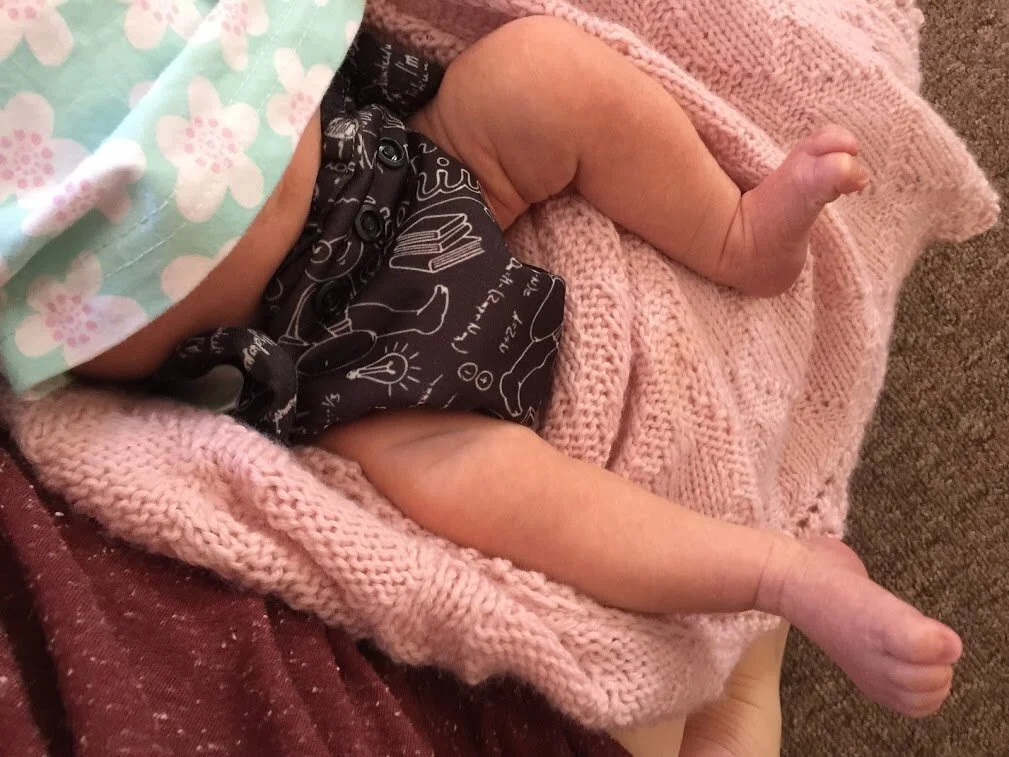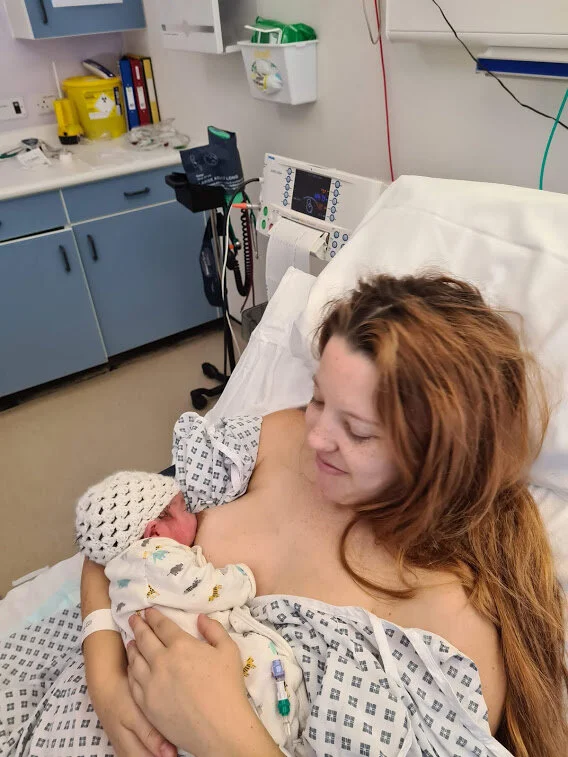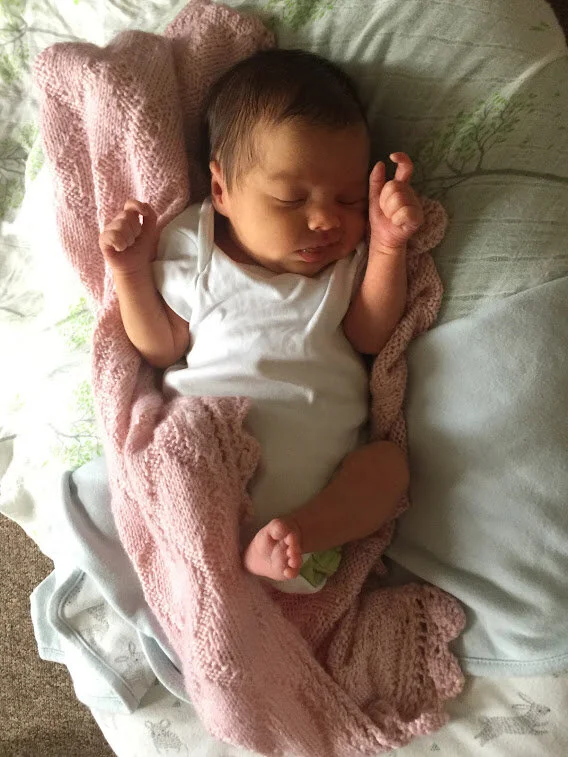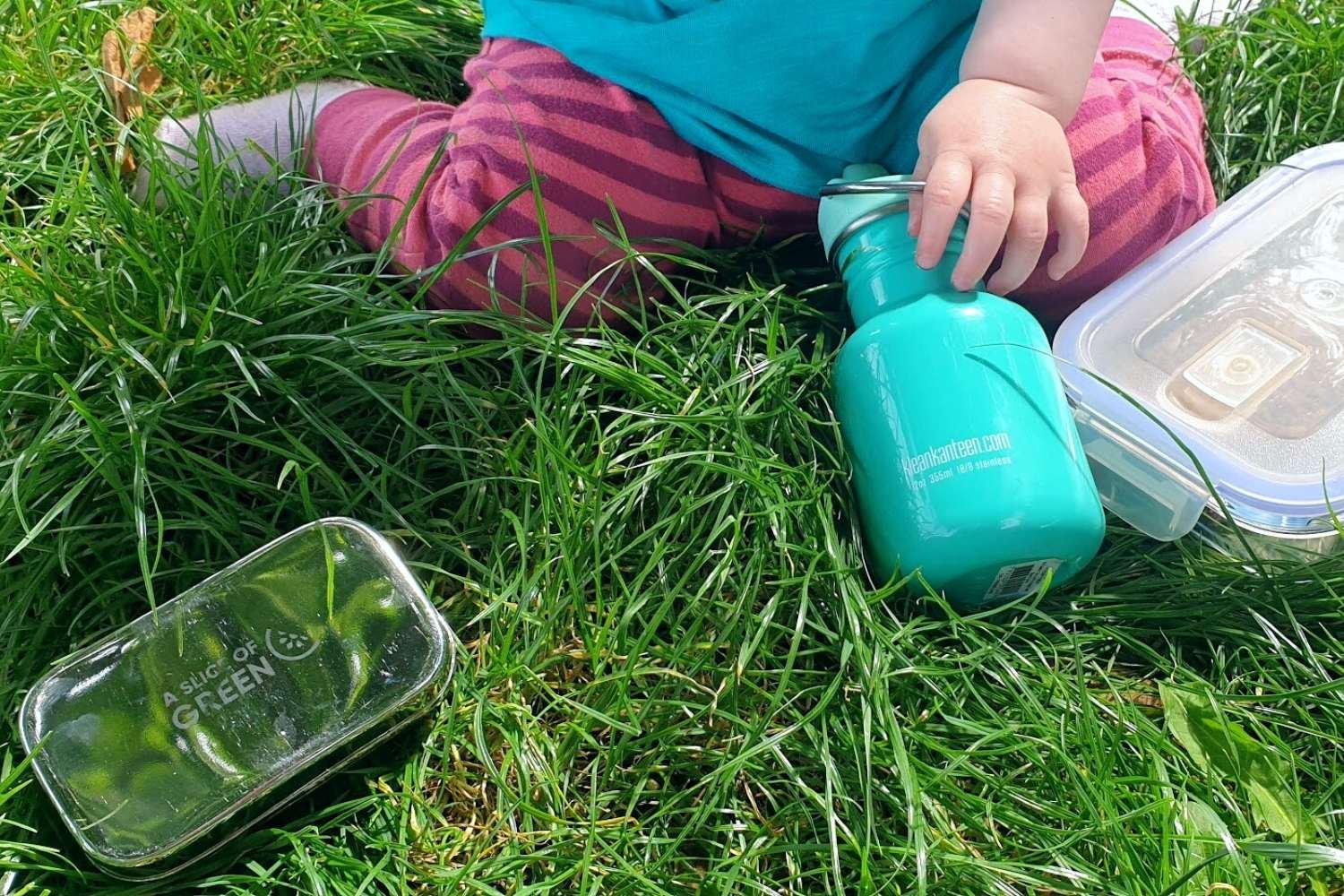Tips For a Low Waste + Sustainable Postpartum
This blog post is sponsored by WUKA and contains affiliate links - all words and opinions are my own.
Pregnancy, postpartum and the newborn phase are a time to focus on you.
And your baby …obviously.
If you hold sustainable values, you may be hoping to reduce your postpartum plastic waste and use natural products with the safest ingredients for you and your child.
If this isn’t your first baby, you may be feeling more confident about reducing your plastic waste this time around.
If you’re a first-time mum (or parent), you probably don’t have a clue what to expect during the postpartum recovery. I certainly didn’t - either time!
Being in tune with your body and preparing for birth can make eco-friendly choices a lot less overwhelming. If you do find sustainable living is making you feel stressed - take a step back and slow down.
Taking care of your mental and physical health is the most important thing right now.
Tap to pin to your zero waste Pinterest board:
Coming up
Pregnancy is tough but if you have the energy and would like to give it a go, I’ve got a bunch of tips and advice for helping you to make your postpartum period more eco-friendly.
I’ve focused a lot on bleeding after childbirth because I had so many questions when I was pregnant and really struggled to find answers. If there’s anything you’d like to know, feel free to ask in the comments below and I’ll get back to you asap.
Postpartum bleeding
The benefits of reusable sanitary pads and pants for postpartum bleeding
Postpartum cloth pads
Reusable postpartum pants review (super heavy flow)
FAQ about washable pants and pads postpartum
Bed protection
Other plastic-free postpartum essentials
Healing after childbirth
1. Postpartum bleeding (lochia)
I was not prepared for how much you bleed after birth. Postpartum bleeding (lochia) is like a long, heavy period so you should expect to go through a lot of pads.
Your body is healing by removing the blood and tissue that grew your beautiful baby. It’s a natural next stage after childbirth and is completely normal.
That doesn’t mean it is pleasant though so making yourself comfortable is an absolute priority.
How long does the postpartum bleeding last?
Postpartum bleeding starts as soon as your baby is born (either vaginally or by caesarean) and lasts up to 6 weeks. Mine stopped around 4 weeks with both babies and I’ve had both types of birth.
Remember, all bodies and births are different. If your bleeding lasts longer than six weeks, it is perfectly normal.
2. The benefits of reusable sanitary pads and pants for postpartum bleeding
Reusable products are better for the environment because you’re not throwing products away after a single-use.
They don’t contain irritating chemicals.
They don’t have sticky wings - something that can make you nervous if you’ve got stitches.
They are more absorbent, especially if you’ve been lying down along time causing blood to pool and then gush out.
You can reuse them for your periods because they last many years.
They are like soft cushions next to your skin which is nicer if you’re feeling a bit fragile down there.
3. Using cloth sanitary pads For Postpartum bleeding
Cloth sanitary pads (CSP) are eco-friendly versions of disposable sanitary pads. They usually contain waterproof PUL or wool and the wings have a popper to keep them in place. I like CSP to have cotton or fleece at the back (the side resting on my underwear) so they don’t move around in my pants.
Some reusable pads are made from organic materials, like cotton, which is natural and breathable. Others (which are usually a lot cheaper) are made from stay-dry synthetic materials, like charcoal fleece, Minky or polyester.
I’ve got sensitive skin and find cloth pads topped with cotton significantly more comfortable than fleece, but it comes down to personal preference.
While they do cost a bit more, small sustainable businesses and WAHMs (work at home mums) put a lot of thought into the shape, material and size of their products. It is a good idea to measure the length of your pants so you can choose the right size for you.
There are usually lots of people selling cloth sanitary pads in B/S/T Facebook groups - this is a great way to try different brands and save money.
4. Washable Period pants for postpartum bleeding
What are period pants?
Period pants are knickers with an absorbent core that have been designed to replace sanitary pads or tampons. They can also be worn together if you have a heavy flow and would like an extra layer of protection to prevent leaks.
Can period pants be worn postpartum?
Yes, you can wear period pants postpartum. They are a great alternative to disposable knickers after birth. You simply wash them with the rest of your clothing and wear them again once they’re dry.
Not only are they much more comfortable than sanitary pads, but they are also kinder to the environment because you can continue to wear them once your periods return.
WUKA Ultimate Super Heavy Collection
Sustainable period brand WUKA has just launched a brand new pair of pants with postpartum mums in mind. They sent me a PR sample to try out because my period has just returned - my first one since having my daughter.
Another thing you don’t get told is that when your period starts after having a baby, it can be heavier and the cramps can last longer. I know - more to look forward to. At least you will be able to reuse your eco-friendly postpartum products!
On the subject of heavy periods, WUKA has chosen to donate 1% of their profits from this range to Endometriosis UK.
Review | wuka Ultimate Super Heavy Pants
WUKA Ultimate Super Heavy Pants can hold up to 60ml of blood. For context, a regular tampon holds 5ml so this is a lot! They have been designed for heavy bleeding (like postpartum), sleeping or wearing for long shifts.
In the photos, I am wearing the medium high-waisted ultimate pants and Tencel bralette. I am a size 12 and 32DD (ish).
DESIGN:
WUKA’s period pants have an absorbent panel that goes from the top of the pants at the front all the way to the top at the back so you don’t have to worry about leaks. The absorbent section is natural and soft with no seams to aggravate a C-section scar.
WUKA have ensured the waistband on their Super Heavy Period Pants is very stretchy so they can be worn postpartum when you will likely still have a (slightly smaller) baby belly for some time. Mine took months to go away after my C-section and I haven’t really lost any weight since the birth so I appreciate the extra bit of room.
The pants are available in two styles - high waist or midi brief.
SIZING:
WUKA’s inclusive sizing goes from size 6 to 26. I was a size 10 before my last pregnancy and although I’m around a size 12 now, I have worn size 14 underwear since giving birth because I find it more comfortable.
My hips measure 38 inches (or 96.5cm) which is a size 10 on WUKA’s size guide. I would never usually get a size 10 on my bottom half though as I get bloated a lot.
WUKA have said their Tencel range, which includes their Super Heavy Period Pants, are generous sizing so I went for a size 12 (which is a medium).
I’m happy with the fit of the medium pants around my belly and can see there is plenty of space for the waistband to stretch.
MATERIAL
I mentioned earlier that I have sensitive skin so I really like that WUKA chose to make their period products and underwear from Tencel modal.
Tencel, which is a brand name, is one of the most sustainable fabrics there is. While cotton is natural, it causes an abundance of environmental issues when it isn’t grown organically.
You might not have heard of Tencel so here are a few things you might want to know:
Tencel is a biodegradable plant-derived fibre made from wood pulp - it is a brand name so you can be sure it came from sustainably managed forests.
Certified by EU Ecolabel, Tencel production uses less water, energy and chemicals than cotton.
It’s also three times softer and can be made to feel silky.
WUKA also sent me their Tencel bralette which is soft, comfortable and easily accessible if you’re breastfeeding.
CONCLUSION
Postpartum is a time to do anything you can to keep yourself comfortable and WUKA is making that easier by providing an alternative to bulky sanitary pads and disposable knickers. It’s reassuring to wear them at night and not have to worry about leaks.
Due to their strong absorbency, they are a bit slow to dry so it’s worth having a few pairs to alternate between. That way you have something to wear while the other pairs dry.
You can buy WUKA’s Ultimate range on their website here.
5. FAQ about using reusable pads and period pants postpartum
How often should I change my cloth pads after birth?
How many washable sanitary pads and pants do I need?
How to wash period pants and pads
How often should I change postpartum pads?
Postpartum bleeding is like an extremely heavy period for the first few days. It will be bright red blood with small clots. You will need to change your pad every one or two hours after birth for hygiene reasons, paying extra close attention to the size of the clots if you’re using reusable products (because they can be harder to see).
After two or three days you can usually go up to three or four hourly, but all bodies are different and some people bleed heavier than others.
How many washable pads and pants do you need after birth?
How many reusable pads you need postpartum depends on how much laundry you are up for doing and your budget.
If you’d like to use reusables full time, 20 pads and pants is the minimum you will need and you’d need to put a wash on every day for the first few days.
After around 7 days, you should be able to use any sanitary pads and period pants that you already own. If you don’t have any yet it’s worth including some lighter pads in your stash, especially if your periods aren’t usually heavy. It will be most cost-effective to buy products you can reuse again at a later date.
Not everyone can afford to purchase that many menstrual products at once, it is perfectly ok to use a mix of everything or do whatever works for you.
Natracare makes plastic-free, organic disposable pads which are a good compromise if you’re unable to afford a full stash of pants and pads. I had a box of these in my hospital back just in case and found them so useful after my emergency C-section.
How to wash period pants and pads
Reusable period products are convenient to wash as they can be thrown in with the rest of your laundry. They simply need a quick rinse in the sink and can be placed in a wet bag or laundry basket until your next wash.
Most cloth sanitary pads can be washed up to 60, but some washable pants may not be suitable for a hot wash and may even need a delicate cycle so it’s helpful to check a brand’s washing guidelines individually.
WUKA’s Super Heavy Pants should be rinsed out after use and then stored however you like until they get added to your main wash up to 40 (a wet bag or your laundry basket are popular methods). It is fine to wash your pants (and pads) with the rest of your clothing.
You must not use fabric softener though as this could ruin the absorbency, but your usual detergent is fine. They also can’t be tumble dried but they’re small so it takes 5 minutes to pop them on a clothes airer.
6. Reusable bed protection
Blood isn’t the only bodily fluid that can stain your mattress (let’s not forgot postpartum night sweats!). You will quickly learn your mattress is a prime target for all kinds of leaks - both yours and the baby’s.
One item you will find on most “postpartum essentials” lists is disposable puppy pads. I had one on my bed in the hospital during both my births so I do get the convenience. Unfortunately, puppy pads are single-use and made from plastic. They also shift around on the bed which is quite annoying.
Puppy pads can easily be replaced with ordinary towels. Simply fold a towel underneath you when you’re sitting on the sofa or lay a beach towel underneath (or on top) of your bed sheet.
One thing I found useful was stealing my daughter's cot bed mattress protectors. We bought her an organic mattress from Little Green Sheep and their mattress protectors are not fitted which made them perfect to use anywhere you want to sit - even in the car.
I never had period pants in the first weeks following birth, but I did experience leaks both times I was in the hospital (using disposable pads) so I can appreciate the convenience and the comfort that postpartum pants can provide.
7. Other plastic-free postpartum essentials
Reusable breast pads
Reusable breast pads are a cost-effective postpartum (and pregnancy) essential. I started out using disposable breast pads with my first baby and I quickly realised how expensive it was turning out.
They can also be used during pregnancy. Lots of women start leaking colostrum when they’re pregnant so breast pads can be used early on. They provide a cushion-y barrier which can be a great relief if you have sensitive nipples.
Just be cautious that some of the cheap options in the supermarkets and Boots are made from synthetic microfibre which is not what you want on sensitive skin.
I used my reusable breast pads as makeup cleansing pads once I’d stopped leaking and then they went back to being breast pads during pregnancy and breastfeeding my second baby.
If you’re crafty you could even create your own breast pads. If not, Tabitha Eve, Close Parent and Acala are sustainable options.
Cloth nappies and wipes
Using cloth nappies and washable wipes can save you a lot of money in the long run. I kept it simple and cheap by using muslins and fasteners as newborn nappies and cutting up a thick sheet to make DIY baby wipes.
I’m not going to pretend the laundry wasn’t a lot as my eldest was still wearing night nappies and having accidents in the day. Ensuring a wash was put on every day and finding a routine that worked for us all helped a lot in the early days.
If you’d like to know more about alternatives to disposable nappies, check out my guides on newborn cloth nappies and elimination communication from birth.
A water bottle
Did you know breast milk is 80% water? Whether you’re planning on breastfeeding or not, it is so important to stay hydrated (let’s not forget that postpartum sweating, eh?).
My preloved newborn cot took the place of my bedside table when both my babies were born, yet the late-night cluster feeds and random British heatwaves meant I needed to be drinking at night.
Any water bottle is fine (everyone has an empty squash bottle somewhere, don’t they?) but I did appreciate my insulated Klean Kanteen which kept my water extra cold on those hot nights and in the NICU.
A metal straw can also be really helpful to ensure you don’t spill your drink on your baby. Unfortunately, nobody has invented a device to stop you from spilling your dinner on your baby yet!
8. Healing after child birth
Homemade padsicles
Homemade padsicles are used to soothe pain and reduce swelling in the days after birth. The witch hazel in them will soothe your perineum after a vaginal birth and it will also help shrink any haemorrhoids (which are more common after a C-section)
You can make padsicles using cloth sanitary pads, daytime ones that you use when you’re on your period are ideal, or you could use Natracare’s plastic-free disposables. You could even make your own from scratch by cutting up fabric - I’m sure there are instructions somewhere on the internet.
You will need three ingredients:
1 cup of chamomile tea
4 tablespoons witch hazel (make sure it’s alcohol-free)
2 tablespoon aloe vera gel (pure)
Making padsicles:
Mix the chamomile tea, aloe vera and witch hazel together in a bowl
Spread an even layer on your menstrual pads - they don’t need to be saturated.
Place something between them to prevent sticking together, like foil or baking parchment.
Fold them or place in a bowl to get a nice curved shape and pop them in the freezer.
Drink your remaining chamomile tea and chill!
How to use padsicles:
Padsicles are for soothing not absorbing blood so you will still need to use a maternity pad or put it in a pair of period pants. You are supposed to place the padsicle on top and keep it there for a few hours (depending on how heavy your bleeding is).
You can use up to 4 padsicles a day so 12-16 is good number to start with - you can always make more later.
TIP - You can also use the herbal solution in a spray bottle to provide extra comfort when going to the toilet.
Comfortable clothes
It sounds obvious, but comfortable clothing when you’re breastfeeding and healing from childbirth is essential. If you need to sit around in a summer nightie for a week then do it. If you’re more of a crop top and shirt person that is fine too. There is no shame in continuing to wear your maternity clothes - they are designed for changing bodies.
If you’ve had a caesarean birth then make sure you’ve got big granny panties that won’t rub on your scar, or grab yourself a pair of WUKA’s super soft period pants.
All that matters is you are comfortable so you can enjoy the newborn bubble.
BEFORE YOU GO…
If you found this article useful, don’t forget to hit the share button below. As a work at home mum, your support means the world to me.
SHARE:

